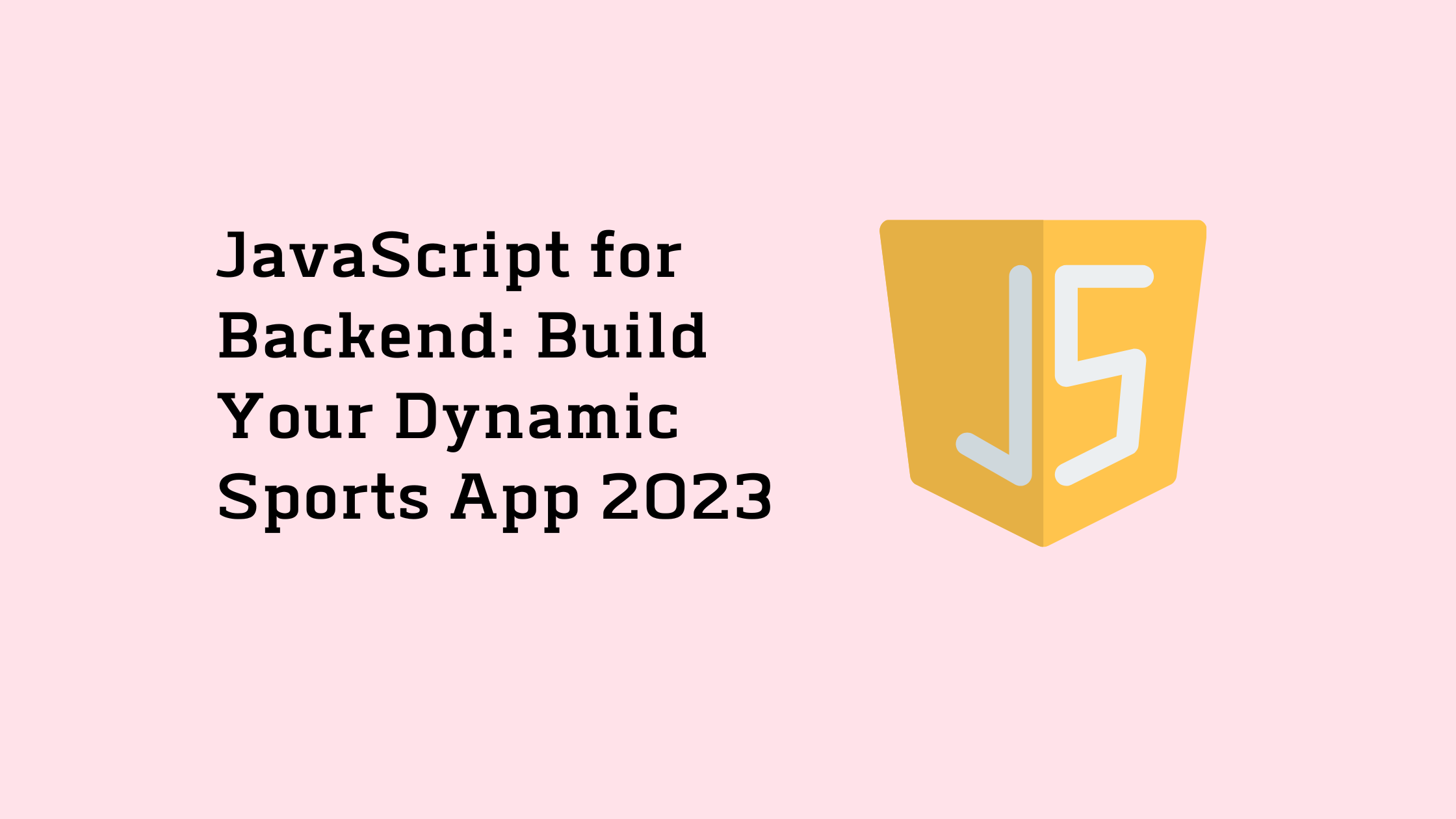Introduction:
The web is powered by JavaScript when it comes to backend web development. JavaScript is responsible for websites’ programmed behavior, including loading and reloading new page material without completely refreshing the page, animating page elements, and validating user input into web forms. HTML and CSS handle the styling and data presented on a page.
The popularity of JavaScript has led to a wave of frameworks. For JavaScript backend developers, a new framework debuts every week, each claiming to be superior to the previous one.



Node.js:
Javascript code runs outside of a browser using NodeJS. The server environment Node.js is free and open, and it supports JavaScript for building server-side web applications. (backend) Node.js is cross-platform compatible (Windows, Linux, Unix, Mac OS X, etc.) We can create a scalable application that is quick and incredibly scalable with Node.js. By utilizing Node.js, we can also use JavaScript throughout the stack, i.e., the same language for both the frontend and backend development. Hence, more rapid and effective growth. You will save tons of time using the extensive library of pre-made packages in Node.js. NPM controls these libraries (Node Package Manager) Asynchronous programming, which involves running multiple processes simultaneously, differs from synchronous programming, which is common in many backend programming languages like PHP and Ruby. It makes Node.js unique.Javascript engine:
Every browser contains a JavaScript engine that supports JavaScript scripts so they can function as intended. A javascript engine’s primary function is to transform the javascript code into quick, efficient asynchronous code that an internet browser can understand. The names of the JavaScript engines used by some of the most well-known modern browsers are listed here.- Chrome: V8
- Firefox: SpiderMonkey
- Safari: JavaScriptCore
- Microsoft Edge/ Internet Explorer: Chakra/ChakraCore
ECMA Script Specification:
The European Computer Manufacturers Association has standardized the trademark scripting language specification called ECMA Script. The requirements that a scripting language (like javascript) must follow to be deemed ECMAScript compatible are laid forth in ECMAScript.
Type definitions in javascript:
Dynamic Typing:
Depending on specific circumstances, the interpreter determines the type of the variable.Primitive Data Type:
It is a type of data with no associated methods, meaning that some defined plans cannot be used with it and are utilized alone. However, there are ways to include those techniques by enclosing these simple data types in variables (covered in the next article). The data types listed below fall within the primitive category:- Undefined: A variable is classified as undefined if it exists but is not defined.
- Null: A variable falls under the null category if it is present but not explicitly set.
- Boolean: A boolean refers to a logical entity represented by either the true or false value.
- Number: The data type number defines a number, which might be an integer, a floating-point number, or a double. The main issue is that each time we represent a number, we must allot memory space equivalent to a double variable.
- String: This is used to define a character’s string values.
- Symbol: This new data type in ECMA Script 6 is special. The primitive data type “symbol” has the property that values of this type can be used to create anonymous object properties.
Object:
JavaScript treats everything as an object. All variables, strings, arrays, and other structures that we know of fall within the category of things. Java Script objects are simple to understand and almost universally understood.Creating objects:
There are 4 ways to create objects.- Creating an object with a constructor
- Using Object literal
- Creating Object with Object. create() method
- Using es6 classes
Coercion:
In JavaScript, what we refer to as C, C++, and Java typecasting is known as coercion. Fundamentally, it changes a value’s type (like string to an integer, integer to a boolean, etc.). Coercion includes two types:- Explicit coercion: The method by which we explicitly define a variable to a data type is known as explicit coercion.
- Implicit coercion: Under specific circumstances, the interpreter dynamically types casts the variable using implicit coercion.
Scope:
- Variable lifetime: A variable’s lifetime runs from when it is declared to when it completes its function. The variable’s scope is global in the absence of any declared positions.
- Hoisting: Variable declarations are not hoisted, but function definitions are. It implies that we can use a function from anywhere in your synchronous code after it has been declared.
The JavaScript engine functions in two stages:
- Creation Phase: The engine reads the entire file before executing the frontend code and throws a syntax error if one is discovered. Any function definitions will merely be stored in memory while it accomplishes that. Variable names will be declared, but we will not initialize the variables.
- Execution Phase: This phase is when the clean code is run, which is why the variable hoisting example above fails. The variable was only declared but not created during the creation phase.
Backend javascript framework:
Next:
In a way that initially appears strange, the Next framework blurs the barrier between the front and back end. Eventually, sharing JavaScript code throughout the project makes it incredibly simple. It eliminates the requirement to write the same task in multiple backend languages of clean code. Nearly the same component is used for displaying client-side markup and querying a data store. Everything about creating with Next becomes pretty intuitive once you master the fundamentals. With Next, we get highly well-maintained documentation and the same setup simplicity as with programs like create-react-app. Because the API routes and pages you build are converted into asynchronous functions, Next was essentially made to be deployed with Now. Developers may save time by concentrating more on real-time application concerns rather than AWS console issues. Next.js (now up to v.9.5) is promoted as a wonderful framework for everything production-related, from TypeScript and built-in CSS support to library code-splitting and bundling packages. It was first released in October 2016.Express:
Express.js is an option for developing server APIs and web apps. Its quickness, simplicity, and flexibility offer all the capabilities required to create straightforward and complicated programs. Installing the necessary npm packages enables it to be readily expanded, allowing for the solution of any issue. Express offers a layer on top of node.js that does not restrict its functionality, allowing us to use its features quickly. Express supports a vast range of template engines, making it appropriate for creating apps with server rendering (for example, pug and handlebars). It has numerous HTTP service methods and intermediate handlers for API development.Gatsby:
Since the pages may be created on the developer’s computer and delivered to an object store and CDN, Gatsby does not require a server (i.e., AWS S3 and Cloudfront). The microservice architecture offers speedy performance while reducing expense and complexity. With a vast library of more than 2,000 plugins, Gatsby is also scaleable. Gatsby, a React and GraphQI-based framework, works best for building relatively static websites with services attached (via its plugins, of course). The fact that Gatsby does not do server-side rendering keeps sites created with it extremely quick, but it can also be restrictive.Node.js:
Node.js is the preferred JavaScript backend architecture. We choose this microservice architecture mostly because it allows for full-stack JS development. It makes it easy to reuse packages of library code on both the front end and the back end, which is a major benefit given how frequently we utilize React and Vue.js. A web application that uses JavaScript on both ends loads very rapidly and fluidly. The applicability of Node for real-time applications, particularly those for communication, would be the next justification. A framework that makes software quickly responsive is essential as we develop several apps with calling and messaging features. Apps created with Node.js may also effectively manage multiple user requests. Node.js has a wide range of applications for developers of all stripes. It is quite helpful in the context of AWS, where you may use it to launch EC2 instances.Meteor:
Another framework that resembles a platform a little more is Meteor. A package system, build and deploy capabilities, and testing assistance are all included with Meteor. While it shares some features with other frameworks like next.js or gatsby, it is distinctive in several respects. The DDP protocol, exclusive to Meteor, is used for data synchronization. DDP selectively synchronizes collections in two mongo databases: the server-side mongo database and the client-side mini mongo database. It eliminates the developer requirement to write API code for data transmission between the client and server, as I would if I were to use Express. It does it beautifully: It uses reactive behavior on the client so that when new data arrives, the page updates reactively using React or another reactive framework. It only sends patches, preventing the needless sending of repeated data (Vue, Angular, Blaze). Although many users now utilize GraphQL to reduce the need to write API code, Meteor still stands out for its live and reactive feature of the data “just being there. It is ideal for any web application where users add to or modify material since it allows users to share their work in real-time and smoothly with others. The second thing I have yet to see in that form anywhere else is the possibility of having packages that have both a client and a server portion. Account management is the best illustration of how this functionality is important. For user management and authentication, a developer often needs to pick two libraries—one for the front end and one for the back end—and then figure out how to integrate them. There are several hazards, and the developer usually needs to understand more about both of the chosen libraries than they would want. It is easy to do with Meteor. For example, if you add the “accounts-password” package, you get a user database on the server with (hashed) passwords and the necessary UI with login/signup/forgot-password/etc. The capabilities of the client and all the communication are already taken care of. You may add other packages like “accounts-google” for single sign-on with Google (and a similar package for Facebook or different social logins) just as easily. Because it is developed in Node.js and integrates with MongoDB, a well-liked cross-platform database engine, Meteor is very beneficial for developers creating business solutions.Conclusion:
Most of the tech experts we asked regarding backend JavaScript frameworks employed two or more for their own unique needs (the most common being a Node-Express workflow). It demonstrates that there isn’t one “magic bullet” option for backend JavaScript and that your results will always depend on your usage and needs. The strength of the JavaScript framework ecosystem is demonstrated by the many alternative backend frameworks that go unmentioned here. Examine your unique requirements, and we are confident that one or more will be the ideal fit.FAQs:
Is JavaScript suitable for backend use? JavaScript. Yes, JavaScript is frequently used in frontend development, but in more recent times, backend development as well. That is made feasible by the backend functionality provided by Node.js, a JavaScript runtime. Which backend does JavaScript work best with? Top 5 JavaScript Backend Frameworks- Sails
- Next.js
- Koa
- Express.
- Meteor

Priyadharshini K.R is a professional blogger with over 3 years of experience who works at Squash Apps. She is dedicated to providing high-quality content to help clients get more visibility on the search engine result pages. She works hard to boost her clients’ online presence through various content writing services. Hailing from Erode, she is passionate about helping people understand content marketing through easily digestible materials.


